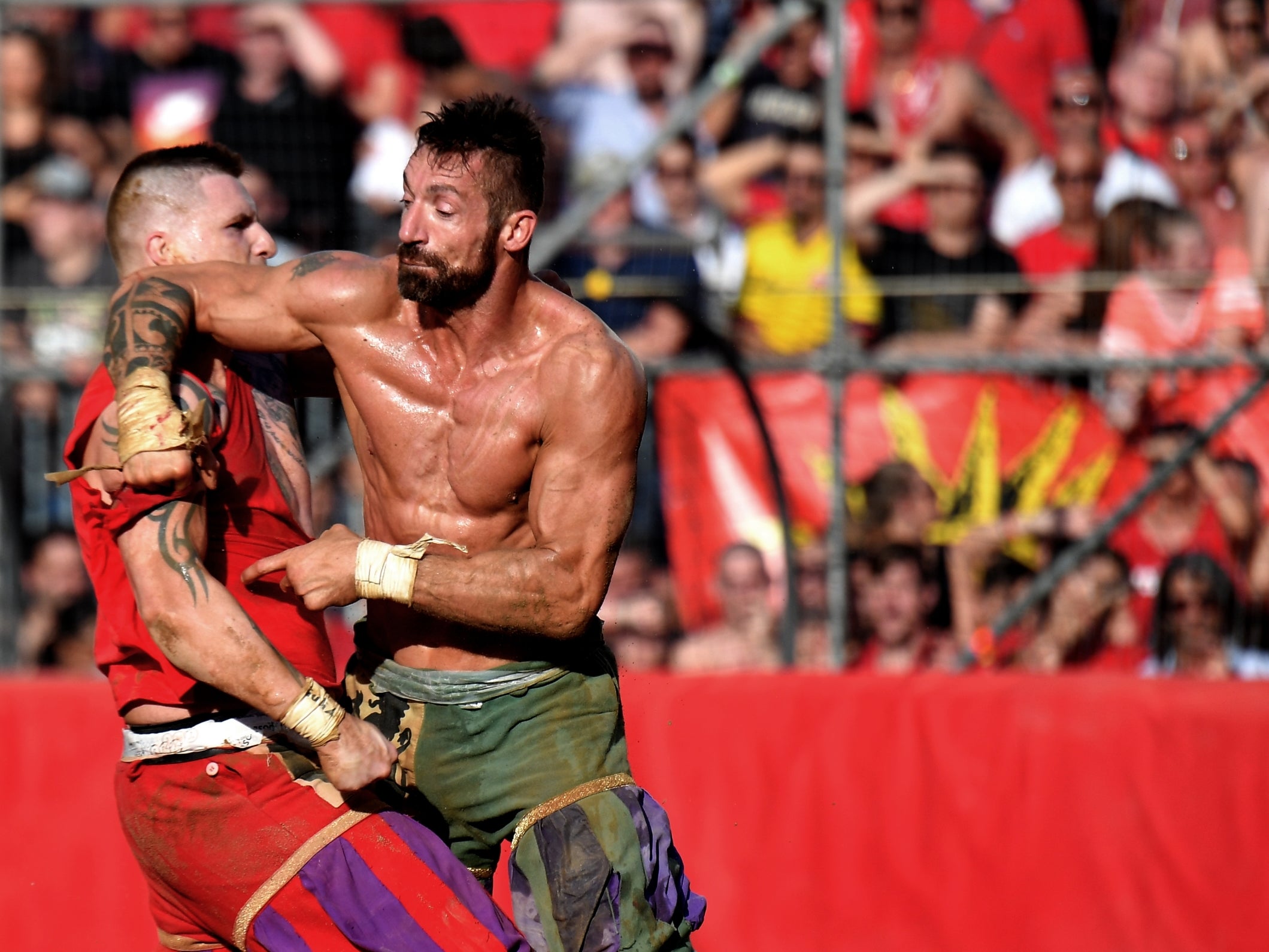Calcio storico fiorentino: the traditionally brutal sport originating from 16th-century Italy
This ancient game has been described as the world's most dangerous sport – and it's easy to see why

A violent sport with a deep tradition, calcio storico fiorentino (which means “historical Florentine football”) has origins dating as far back as 16th century Italy.
The game – also known as calcio fiorentino or calcio storico – is a mix of football and rugby, with some mixed martial arts in there for good measure. It was played across the country before the creation of soccer as we know it today.
After interest in the sport started to fall in the 17th century the “Florence kick game” saw a resurgence under Benito Mussolini in the 1930s. During this time most games were played with handmade balls in city squares.
In modern times it takes place in Piazza Santa Croce, with the area in front of Santa Croce church covered in dirt to create the pitch.
After its resurgence, calcio storico fiorentino evolved into the annual event seen today, with four teams taking part every summer.
Each team represents one of four historical neighbourhoods of Florence: Santa Croce, who play in blue; Santo Spirito, who are known as the whites; Santa Maria Novella, the red team; and finally San Giovanni, who wear green.
All players that take part are volunteers, who know that after a 50 minute match they are highly likely to be leaving the field injured and bloody.
Cannon fire signals the start of a game and the two teams of 27 players attempt to score by moving the ball into the opposing teams goal, or “caccia”, that spans the 40m width of the pitch, by any means necessary.
If the ball is thrown over the net however, half a point is given to the defending team. No substitutes are allowed and it is the aim of the 15 forwards on the pitch to injure or incapacitate their opponents while the backs run with the ball and attempt to score.
Calcio storico fiorentino is definitely a violent spectacle but this does not mean that everything goes. Punches, kicks, head butts and wrestling are all considered legal by the rules of the game. However players are ejected for kicks to the head, as well as if more than one player attacks an opposing player at the same time.
In addition to the referee, each team is led by a captain and a standard bearer who do not take part in games but are able to organise and maintain their side’s discipline when tempers flare.
The games themselves are a key element of the feast day celebrations in Florence for its patron saint St John the Baptist.
Spectators are treated to a parade of all four teams in traditional uniforms before the game, with the end-of-games celebration taking place along the banks of the Arno.
As for the players, they are not allowed to receive any compensation for taking part, as no professionals are permitted. In the past the winning team would win a Chianina calf (an Italian breed of cattle) but in recent years this prize has been reduced to a free dinner.
Those who are involved, however, are content just to take part, testing themselves in this most dangerous of games.
Join our commenting forum
Join thought-provoking conversations, follow other Independent readers and see their replies
Comments